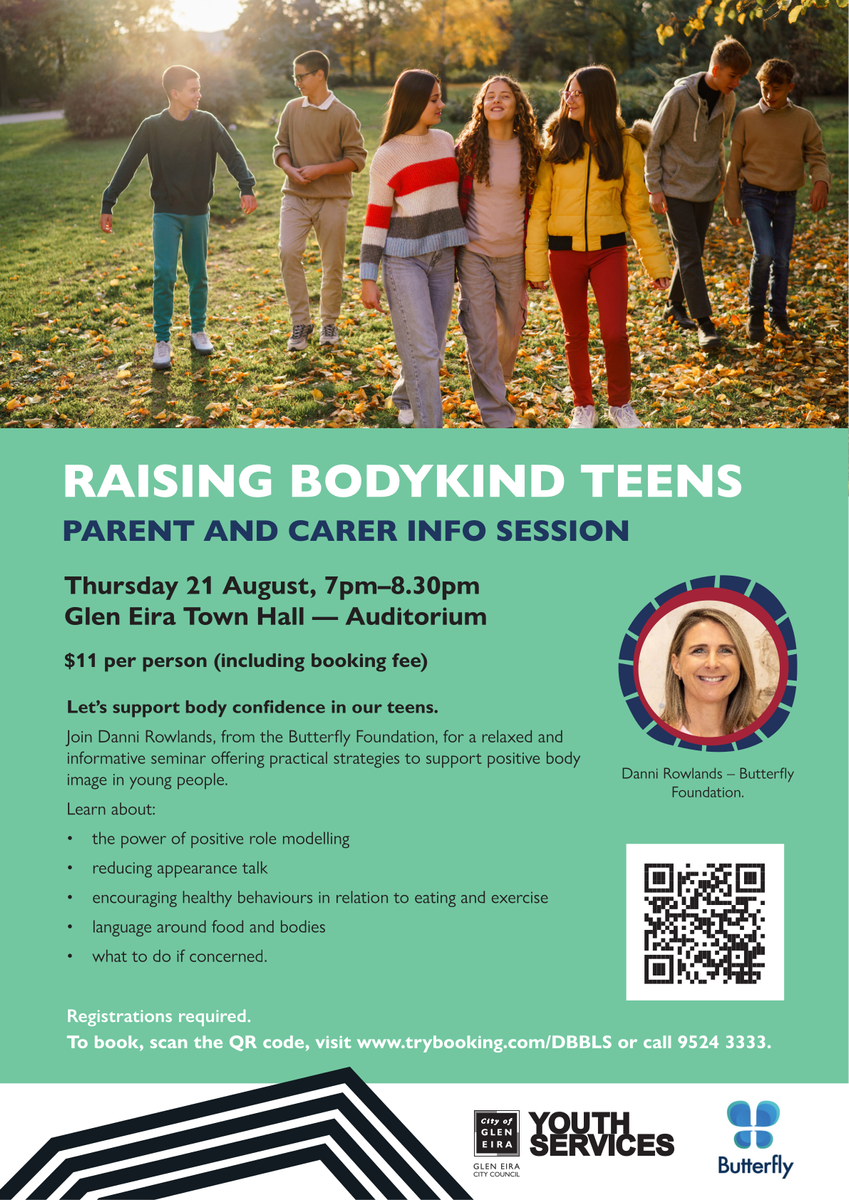Mental Health & Wellbeing Students/Parents/Carers Support
Articles, Videos & Resources

Mental Health & Wellbeing Students/Parents/Carers Support
Articles, Videos & Resources
Dear Parents,
Over the next few months, we’ll be running an informative series in the school newsletters, written by Australian Child Psychologist, Michael Hawton.
Michael (a former teacher himself) has spoken with hundreds of school leaders nationwide through a range of workshops addressing child and teen anxiety. Based on his close work in the education sector for many decades, Michael believes that far more parents are prematurely jumping in to fix a problem on their child’s behalf than was the case a generation ago.
Over the next six weeks, we’ll be exploring what anxiety looks like, what parents can do to alleviate anxious behaviours in children, and how ’jumping in’ to fix a perceived wrong-doing to a child may in fact be reducing a child’s ability to resolve problems independently.
The articles will also include some tips and strategies for parents to address anxiety early.
We hope you enjoy the upcoming series and welcome any feedback you may have.


By Michael Hawton, Child Psychologist (MAPS) and Parentshop founder.
Every parent knows this scenario: your child comes home upset about a school problem—being excluded from a group project, receiving an unfair detention, or friendship troubles. Their distress is genuine, and your instinct is to protect and fix things. But should you?
School leaders across Australia report a significant increase in parental interventions over seemingly minor issues. This isn't just helicopter parenting, it reflects our heightened awareness of potential problems and anxiety about our children's wellbeing. However, this vigilance may inadvertently undermine our children's resilience and problem-solving abilities.
Research by Dr. Eli Lebowitz and his colleagues at Yale Child Study Center has shed fascinating light on what happens when parents consistently step in to alleviate their children's distress. This behaviour, known as "accommodation," involves changing our own actions to prevent or reduce our child's anxiety or discomfort.[1]
When parents immediately contact schools about conflicts, request teacher changes, or remove children from uncomfortable situations, we unintentionally communicate: "This situation is too difficult for you to handle." Research shows this can inadvertently maintain and increase childhood anxiety over time[2].
The challenge is being supportive without accommodating. Instead of saying, "Don't worry, I'll speak to your teacher about that detention," try: "That sounds frustrating. What do you think your options might be?" This acknowledges their distress while empowering them to develop coping strategies.
A 5-step framework for decision-making for parents
1. Assess safety: If your child faces physical danger or serious psychological harm (persistent bullying, discrimination), immediate intervention is appropriate.
2. Apply the "what if" test: Ask yourself what would happen if you didn't intervene. Often, your child might feel uncomfortable but isn't in genuine danger.
3. Consider the learning opportunity: Could this situation help develop important life skills like disappointment management, conflict resolution, or self-advocacy?
4. Check your emotions: Approach the situation with "caring detachment"—caring for your child's distress without becoming distressed yourself.
5. Evaluate patterns: Is this part of a recurring pattern where you consistently solve problems your child could handle?
When choosing not to intervene directly, you're providing something valuable: the opportunity to develop coping capacity. Here's how to support effectively:
Sometimes working with schools is essential. The key is involving your child in the process: "I think this warrants a conversation with your teacher. Would you like to speak to them first, or shall we arrange a meeting together?" This maintains your child's agency while providing necessary support.
Parenting isn't about ensuring children never face difficulties—it's about preparing them to navigate challenges with confidence. Every time we resist immediately fixing a problem our child could handle, we make a deposit in their confidence bank.
The most loving thing we can do is believe in our children's capacity to cope, even when they don't yet believe in it themselves. By supporting without accommodating, we help them develop the resilience they'll need throughout life.
To learn more about supporting your child's emotional development and building resilience, explore our resources at Parentshop - https://www.parentshop.com.au/for-parents/.
Michael Hawton is founder of Parentshop, providing education and resources for parents and industry professionals working with children. He has authored two books on child behaviour management: Talk Less Listen More and Engaging Adolescents. You can find more information, including his books and self-paced online parenting courses at https://www.parentshop.com.au/parent-courses/
[1] Lebowitz, E. R., Woolston, J., Bar-Haim, Y., Calvocoressi, L., Davenport, T., Hunter, L., ... & Leckman, J. F. (2013). Family accommodation in pediatric anxiety disorders. Depression and Anxiety, 30(1), 47-54. https://doi.org/10.1002/da.21998
[2] Lebowitz, E. R., Panza, K. E., Su, J., & Bloch, M. H. (2012). Family accommodation in obsessive-compulsive disorder. Expert Review of Neurotherapeutics, 12(2), 229-238. https://doi.org/10.1586/ern.11.200
By Michael Hawton, Child Psychologist (MAPS) and Parentshop founder.


In the previous article, I cited the work of Professor Patrick McGorry and his colleagues in The Lancet Psychiatry Commission, highlighting the mental health crisis facing our young people.
McGorry's Commission highlights several factors contributing to the current mental health crisis among Australian youth. Social media exposure, climate anxiety, and what they term "global megatrends" are creating unprecedented pressures on developing minds.¹ As parents, you're navigating uncharted territory—our children face challenges we never encountered at their age.
This reality means we need to be more vigilant than previous generations about recognising early warning signs. The old approach of "they'll grow out of it" is no longer sufficient when dealing with the current epidemic of childhood anxiety.
Here's where I want to emphasise something crucial: research shows that when significant adults in a child's life learn how to respond appropriately to anxiety, their intervention can be as effective as professional psychological treatment for mild to moderate anxiety levels.[1] This means that as parents, you have more power than you might realise to help your child develop coping skills.
However, many parents hesitate to intervene because they worry about being "mean" or making things worse. This is misguided thinking. Teaching children to challenge anxious thoughts and face manageable fears isn't cruel—it's essential preparation for life's inevitable challenges. As I often say, it's better to prepare the child for the road rather than the road for the child.
Red Flags That Warrant Professional Help
While many children can manage anxiety with family support, certain warning signs indicate the need for professional intervention:
The goal isn't to eliminate anxiety entirely—that's neither possible nor desirable. Instead, we want to help children develop what I call "robustification" skills. This involves teaching them to recognise anxious thoughts, question their validity, and develop practical coping strategies.
Start by helping your child understand that anxiety is a normal human emotion that everyone experiences. Normalise the feeling while teaching them that they don't have to be controlled by it. Encourage problem-solving rather than avoidance and model calm responses to stress in your own life.
Create predictable routines and environments that foster a sense of security, whilst gradually exposing your child to manageable challenges that build confidence. Remember, building resilience is like strengthening a muscle—it requires consistent, progressive effort.
Given the scale of the mental health crisis documented by McGorry and his colleagues, we can't afford to wait for symptoms to become severe before acting. Early recognition and intervention are our best tools for helping children develop the resilience they'll need to navigate an increasingly complex world.
As parents and community members, we have a responsibility to become more skilled at recognising anxiety in children and responding effectively. This isn't about creating a generation of anxious parents, but rather about equipping ourselves with the knowledge and tools needed to support our children's mental health in challenging times.
By learning to recognise anxiety early and responding with appropriate support for your child, we can help reverse the troubling trajectory that McGorry's research has identified and give our children the tools they need to thrive.
References:
1. McGorry, P.D., Mei, C., Dalal, N., et al. (2024). The Lancet Psychiatry Commission on youth mental health. The Lancet Psychiatry, 11(9), 731-774.
2. Creswell, C., Parkinson, M., Thirwall, K., & Willetts, L. (2017). Parent led CBT for child anxiety. Guilford Press: New York.


By Michael Hawton, Child Psychologist (MAPS) and Parentshop founder.


As a psychologist who has worked with families for over thirty years, I've witnessed firsthand the sharp rise in childhood anxiety that's sweeping across Australia.
What once seemed like isolated cases have now become the norm in many households and classrooms. The recent work by Professor Patrick McGorry and his colleagues in The Lancet Psychiatry Commission paints a stark picture: we're facing a mental health crisis among our young people that has reached what they describe as a "dangerous phase."[1]
McGorry's research reveals that the mental health of emerging adults in Australia has been declining steadily for the past two decades, with anxiety disorders at the forefront of this troubling trend. The COVID-19 pandemic and global megatrends—including social media pressures, climate anxiety, and economic uncertainty—have further accelerated this decline.¹ As parents, this means we must become more adept at recognising the early signs of anxiety in our children before these patterns become entrenched.
Before we dive into identification, it's essential to understand that anxiety exists on a spectrum. We must be careful not to pathologize every worried thought or nervous moment our children experience and be cautious of the language we use around children.
The term ‘anxiety’ is becoming more common in everyday language and that can result in children using it in their self-talk, their internal dialogue – ‘I’m feeling anxious today’,” I can’t do it, I’m too anxious’. Normal developmental anxiety—such as a child worrying about a school test or feeling nervous before a performance actually serves an important purpose in building resilience, and gives them experience of overcoming worrying times.
However, when anxiety becomes persistent, interferes with daily functioning, and causes significant distress, we're looking at something that requires intervention. The key distinction lies in whether the anxiety is proportionate to the situation and whether it's preventing your child from engaging in age-appropriate activities.
Early childhood and early primary (Ages 3-6)
Young children often express anxiety through their behaviour rather than words. Look for sudden clinginess when separation was previously manageable, frequent complaints of tummy aches or headaches without medical cause, and regression in behaviours they've already mastered (such as toilet training or sleeping independently). These children might also develop intense fears of imaginary threats or become unusually upset by changes to routine.
Primary school years (Ages 7-12)
School-aged children may begin to articulate their worries more clearly, often focusing on academic performance or social acceptance. You might notice excessive worry about being "perfect," avoidance of school activities or social situations, and physical complaints that seem to coincide with stressful events. These children often seek repeated reassurance about everyday situations and may struggle with decision-making.
Children's bodies often tell the story before their words do. Persistent headaches, stomach complaints, muscle tension, and sleep disturbances are common physical manifestations of anxiety. Emotionally, you might observe heightened reactivity—what seems like an overreaction to minor setbacks, increased irritability, or sudden tearfulness over seemingly small issues.
Pay particular attention to avoidance behaviours. When children consistently dodge activities, they once enjoyed, refuse to attend social gatherings, or resist going to school, anxiety may be the underlying culprit. These patterns often develop gradually, making them easy to miss until they become entrenched.
Next article: Responding to Anxiety in Children: What you can do as a parent
References:
1. McGorry, P.D., Mei, C., Dalal, N., et al. (2024). The Lancet Psychiatry Commission on youth mental health. The Lancet Psychiatry, 11(9), 731-774.


Better Health Network’s (BHN) Health Promotion team is working with Primary Schools to ensure all children have a positive relationship with food and their bodies. Through the use of co-design and best practice evidence, they are working with teachers, students and families to understand and align the mealtime environment that is role modelled to children.
Through this work, Ripponlea Primary School will have a set of Lunchtime Values that have been created with robust engagement and input from families. Reflective practice focus group sessions will be held with staff, students, and families. We want to hear from families on their experiences of mealtimes at home and at the school.
These insights together with those of the teachers and students will help to contribute to a positive lunchtime environment at Ripponlea Primary School.
If you are interested in participating, please get in touch.